In the Goody Patch Some clever community garden design ideas from Adelaide's Goody Patch Community Garden
A commuity garden full of design ideas…
Looking for design ideas for your community garden?
Take a trip to Adelaide, South Australia, and make the short journey to the suburb of Goodwood. There, occupying part of a city park, you will find the Goody Patch Commuity Garden.
Adelaide's Mediterranean climate is conducive to a diversity of vegetables and fruit…
…citrus thrive
… so do figs
…and guava too…
Let's take a walk through Goody Patch and visit some of those good design ideas…
A welcoming entrance creates a good vibe
AN INFORMATIVE AND WELCOMING SIGN
A sign tells the story of the garden, an effective way to let people know what goes on here and how it came to be. It lets vistors know how to contact the gardeners.
AN INVITING ENTRANCE
An entrance can be designed to make the garden inviting to visitors. It can be plain and functional or arty and funky.
The community garden entrance is where you say 'welcome'.
Signs can be simple or arty. This one is arty.
Community gardens are places where people come together to grow food, to meet neighbours and to learn together…
Shelter from hot sun… shelter from cold rain…
Shelter is a necessity in community gardens. Combining shelter with other functions like storage shed and nursery is multi-purpose design.
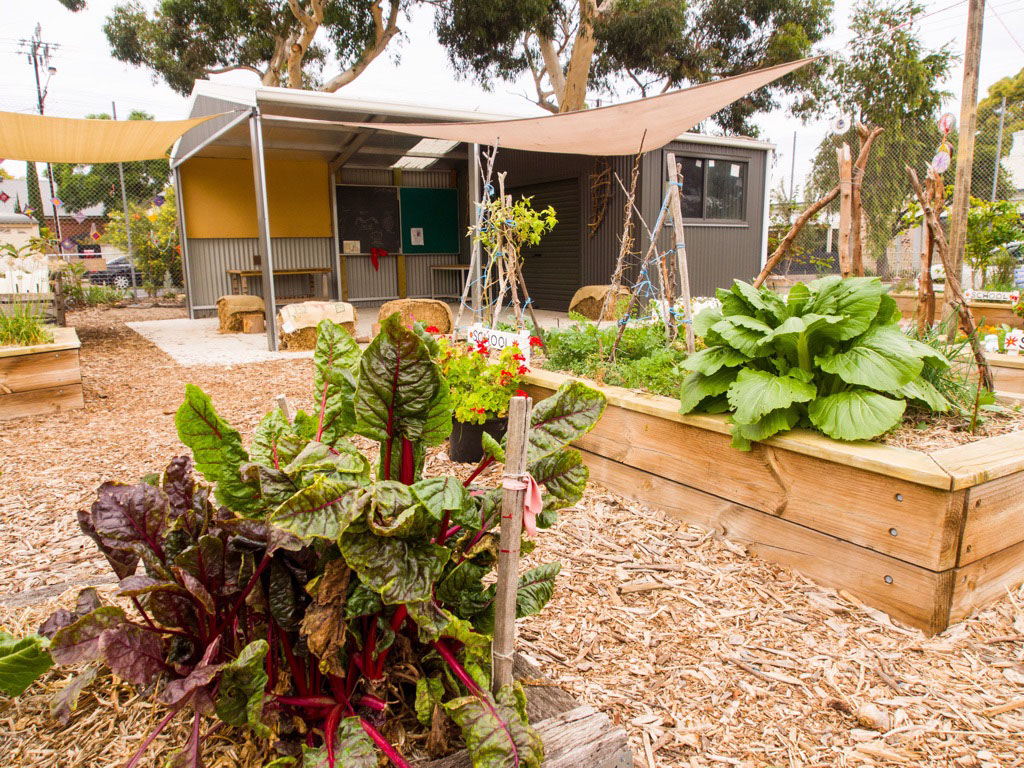
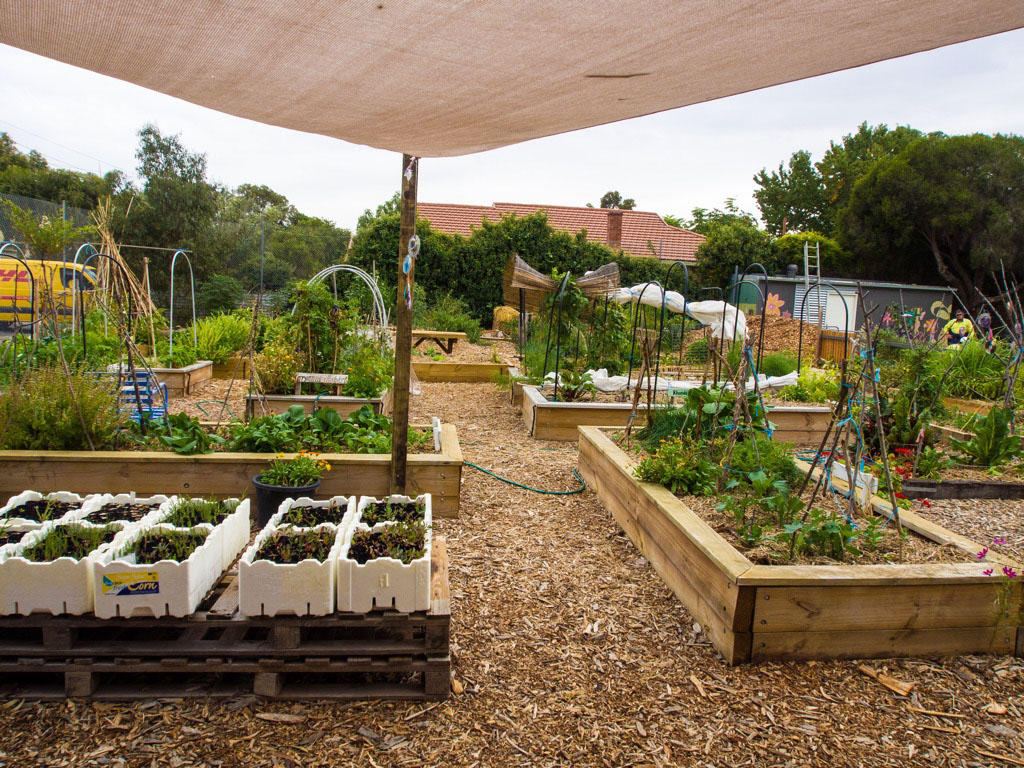
Layer different uses and activities.
Layering different activities in the community garden creates opportunities.
Arts and community gardens go together like tomatoes and snails…
Design and build to reduce time spent in maintenance.
Build strong… maintain less…
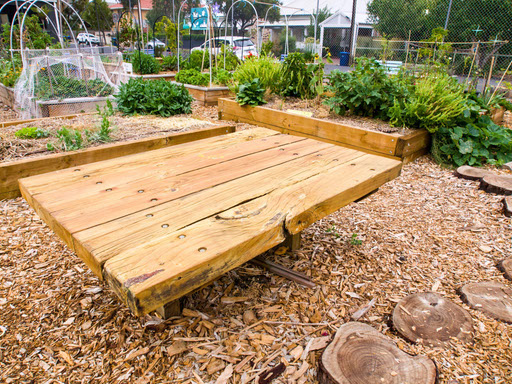
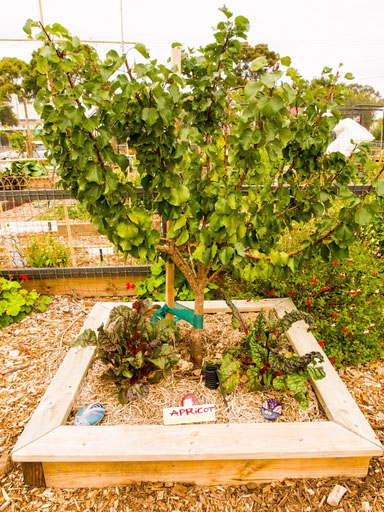
Mulch reduces weed growth… it retains soil moisture… protects soils from temperature extremes and heavy rain… and breaks down into organic matter absorbed by the plant roots as nutrients…
Providing information makes for effective garden management.
A simple sign tells all…
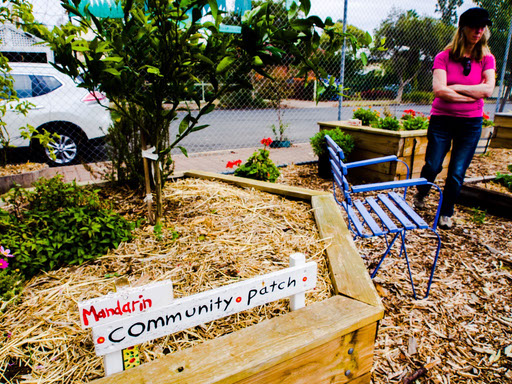
For children, community gardens are adventure playgrounds.
Plan for children's play… community gardens are family places…
Plant diverse gardens.
Plant for diversity… have many different plants in the garden…
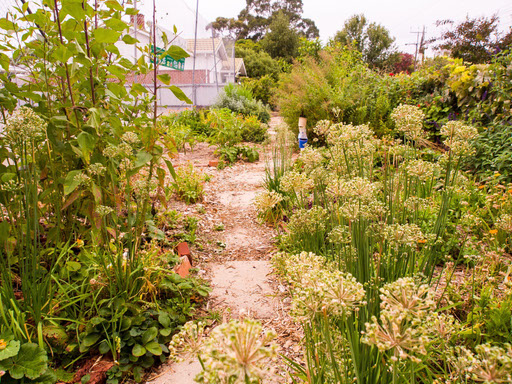
Gimme some water…
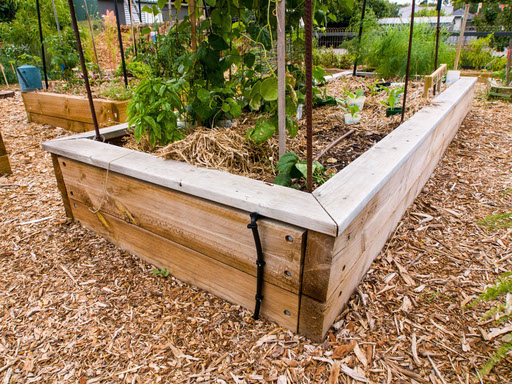
Plant what you like to eat…
It is a good idea to plant the herbs and vegetables that gardeners commonly eat. These capsicum are tasty cooked or crispy raw.
Don't forget fruit. These guava will provide gardeners with sweet pickings while browsing. Bananas, pawpaw, tamarillo, babaco can be grown quickly and will provide fruity food while waiting for the slower-growing citrus to ripen.
Plant for the bees… they pollinate our fruit and veges and, if our garden has a hive, they produce sweet honey too…

The back of beyond…
THE DISTANT CORNERS
What to do with the garden's far reaches? The Goody Patch gardeners have built a small native plant garden complete with a bird bath. Include flowering plants and you make the bugs and bees happy too.
The entire garden including the native plant area is mulched with bark chip, other than the vegetable beds that are mulched with straw.

Photos and story by Russ Grayson